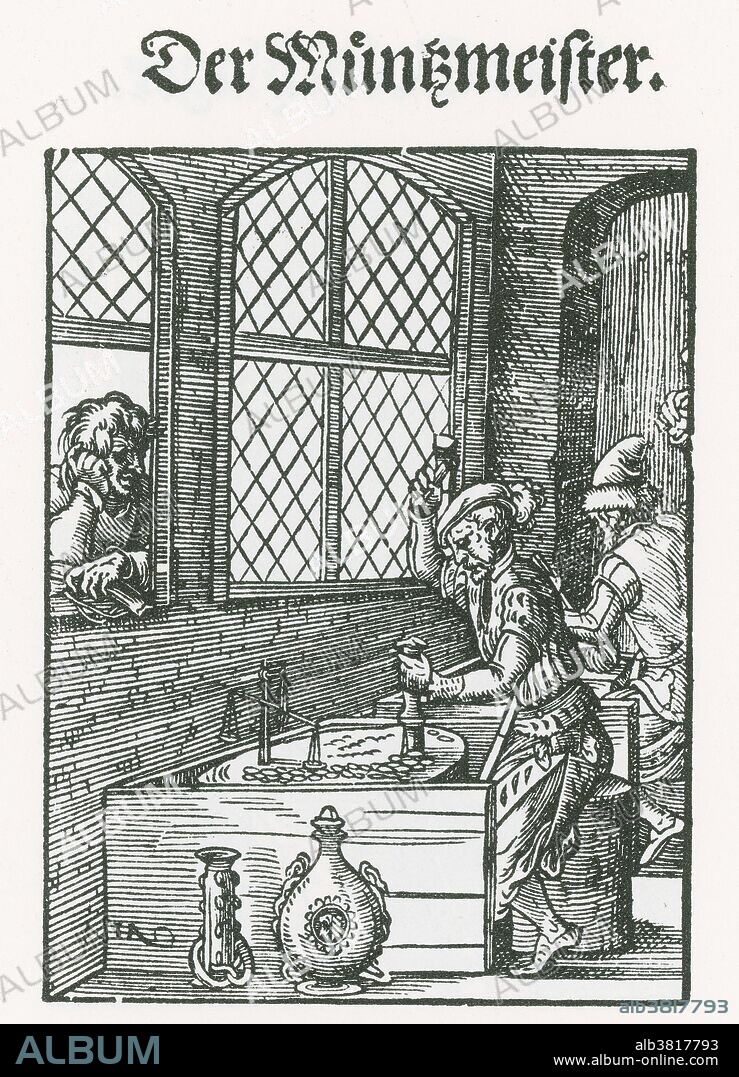alb3817793
Coin Stamper, Medieval Tradesman

|
Add to another lightbox |
|
Add to another lightbox |



Title:
Coin Stamper, Medieval Tradesman
Caption:
Medieval engravers were guild members who created coins in mints. The vast majority of medieval coins were cold struck; the planchets were not heated. Medieval coin dies were largely made of iron. Early medieval coinage was dominated by dies created mostly from punches, which displace the metal of the die instead of removing it. In the late Middle Ages, the dies used to create tornesellos lasted as follows: "hammer" die, 17,000 strikes; "anvil" die, 36,000 strikes. The mint made an average of 20,000 coins per day, so they were making one hammer die a day and one anvil die every other day. The "hammer" dies wore out quicker because they tended to be smaller and were hit directly with a hammer, leading to severe mushrooming on the tops. I
Credit:
Album / Science Source / New York Public Library
Releases:
Model: No - Property: No
Rights questions?
Rights questions?
Image size:
2957 x 4097 px | 34.7 MB
Print size:
25.0 x 34.7 cm | 9.9 x 13.7 in (300 dpi)
Keywords:
ART • ARTWORK • ASSOCIATION • BROTHERHOOD • BW • COIN MAKER • COIN MAKING • COIN STAMPER • COIN STAMPING • COIN • COINAGE • COINER • COINMAKER • CORPORATION • CURRENCY • DRAWING • ENGRAVING • FRATERNITIES • FRATERNITY • GUILD = TRADE GUILD • GUILD • HISTORIC • HISTORICAL • HISTORY • ILLUSTRATION • LEAGUE • MAN MALE • MEDIEVAL • MEN • MERCHANT • MIDDLE AGES • MINTER • MONEY • OCCUPATION • PROFESSION • TRADE GUILD • TRADE • TRADESMAN • TRADESMEN • WOODBLOCK • WOODCUT • XYLOGRAPHY
 Pinterest
Pinterest Twitter
Twitter Facebook
Facebook Copy link
Copy link Email
Email
